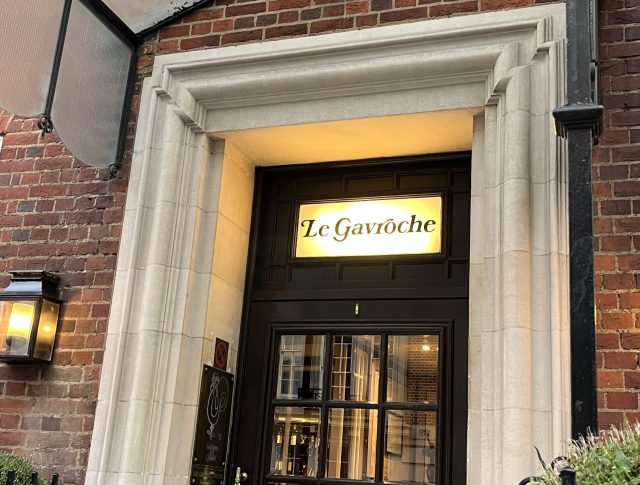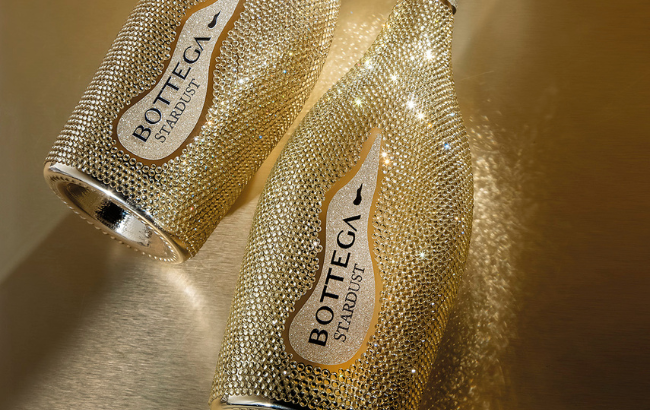Goodbye to Le Gavroche
Le Gavroche shut its doors at the weekend for the final time after 56 years – Louis Thomas asks whether it really was time for the legendary Mayfair restaurant to go.

When the news broke in August of the forthcoming closure of Le Gavroche, I did what was natural – at midnight I seized the first reservation I could find, early on a Friday evening in November. It had long been a ‘bucket list’ restaurant, but it was only the knowledge that my window to see it was shrinking that spurred me on to actually make the booking, and set aside the necessary £350-or-so.
I suspect that I wasn’t the only visitor in recent months who did this. It’s the self-proclaimed gourmand’s equivalent of going on safari to see rhinos – Le Gavroche is a dying breed, witness it before it’s gone.
When the fateful day arrived, I entered the restaurant with a nervousness I don’t necessarily associate with an enjoyable dining experience. What if the ‘Menu Exceptionnel’ didn’t meet my huge expectations, or, indeed the promise made by its name?
Despite having been warned about the decor, kitsch bamboo bannisters (à la tiki bar) and green tartan sofas made me wonder how this oddity had become so influential: was this really the restaurant that launched a thousand culinary careers? Alumni such as Marco Pierre White, Gordon Ramsay and Monica Galetti earned some of their stripes there, after all.
What was revolutionary in 1967 might be behind present tastes. This isn’t necessarily a bad thing – in a world of identikit fine dining establishments, it certainly stood out, and increasingly so as the rest of the restaurant world moved past it. White-gloved waiters calling me ‘sir’ is an extravagance that even the most puritanical of 21st century diners can still relish on the odd occasion, but it’s the sort of stuffiness that that I’m glad is largely extinct.
Whereas the interior of the upstairs bar and downstairs dining room both felt like time capsules of a bygone era, much of the food felt as if it were trapped in the early 1990s, when Michel Roux Jr. took over and shook up the menu to reflect the tastes of the time.
Dishes such as a fish course consisting of dainty pieces of mackerel and kohlrabi felt too out of step with current dining trends (I suspect that most new restaurants might avoid the use of tweezers when assembling) to be modern, but not old enough to be classics enjoying a resurgence.
Partner Content
The courses I enjoyed the most were those that happened to conform to the key commandment of old school Gallic cuisine – dairy fat, and plenty of it. With everyone from James Martin to Thomas Straker preaching the benefits of butter, that kind of cooking, the hallmark of mid-20th century fine dining, could well be due a resurgence, whereas the ‘lighter’ food that Michel Roux Jr. championed in the 90s feels a bit old hat now – history doesn’t repeat itself, but it often rhymes.
It was the drinks pairings that I found more interesting than the food itself. Marsala and sake don’t often appear in the same dinner, and were not necessarily what I expected from a restaurant regarded as London’s second French embassy, though, of course, Côtes du Rhône and white Burgundy also made welcome appearances. Pairing a sweet Sicilian fortified wine with a Soufflé Suissesse (made with English Cheddar) at the start of the meal is the kind of well executed culinary sacrilege that I can get behind, and gave me a small, but much-needed rush of excitement.
Digesting my experience of it all over the following days, I contemplated why Michel Roux Jr. chose to let Le Gavroche go when he did. It would be foolish not to acknowledge that the hospitality industry as a whole struggling, even the most high end restaurants face huge difficulties. Likewise, it’s also worth noting that the Roux family suffered the twin tragedies of losing Le Gavroche founders, brothers Michel and Albert Roux, within a year of one another.
Further more, Michel Roux Jr’s daughter, Emily Roux, seemed unlikely to take over the restaurant, having her own establishment, Caractère, in Notting Hill. It is understandable that they didn’t want to risk letting someone from outside of the Roux dynastic line take charge, though I can’t help but wonder what a third generation at the helm might have done to the menu. Then again, how feasible is it for a half-century-old restaurant to modernise while remaining true to its roots?
Michel Roux Jr. is 63-years-old, older than Le Gavroche for that matter, and though he has enjoyed a successful media career in recent years, he has spent a great deal of his life behind the stove, both gas and induction. He has played the defensive game of keeping Le Gavroche’s two stars (it lost one after he changed the style of food to be less flamboyant) for three decades. Frankly, he deserves a break. Regardless of some of my misgivings about certain dishes, he has undeniably fulfilled his role as a custodian of his father and uncle’s legacy.
Of course, Le Gavroche as a brand endures. I asked what would be happening to its numerous trinkets and artworks, including the painting that gave the restaurant its name, and was told they would be auctioned off – there are plenty of people who appreciate the restaurant’s cultural significance perhaps more than I do, and are prepared to splash out on more than just food and wine. Whether these die hard fans will be following Michel Roux Jr. onto a Norwegian fjord-bound cruise ship for Le Gavroche at Sea remains to be seen. I’m certainly curious to see how the essence of the restaurant is recaptured by Cunard, but am not so curious as to fork out for a ticket.
It is possible to admire the immense legacy of Le Gavroche while also feeling that, like so many historic restaurants, its late reputation fostered expectations that were almost impossible for it to meet. I’m aware that many critics and connoisseurs will strongly disagree, and Le Gavroche’s eccentricities clearly attracted a number of repeat visitors, but, to experience a piece of history before it disappeared, one visit was enough.
Related news
Roux Scholarship 2025 winner revealed




